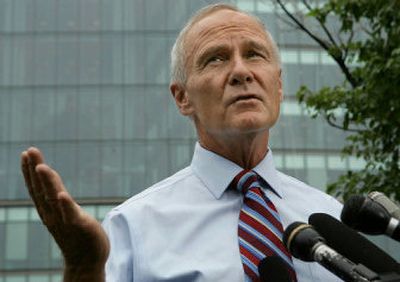All Boston highways to be inspected

BOSTON – Inspectors began reviewing the city’s entire highway system Wednesday – every bridge, tunnel and roadway – after at least 60 signs of loose bolts and other potential failures were found in the same Big Dig tunnel where a motorist was crushed by falling concrete.
Initial inspections by state officials revealed that some bolts had started to come out of the concrete in the eastbound connector tunnel, part of the main route to Boston’s Logan Airport. Gaps also had developed between the ceiling and metal plates that help hold the massive panels in place.
There had been plans to reopen that section of tunnel Wednesday, but Massachusetts Turnpike Chairman Matthew Amorello said it would remain closed indefinitely to ensure motorists’ safety and to collect more evidence in a possible criminal investigation of the tunnels’ designers and builders.
Amorello added that an undetermined number of similar problems areas were found in two adjacent tunnels, raising the possibility of a broader design or construction flaw.
The widespread trouble spots prompted the Turnpike Authority to order an inspection of the city’s entire highway system – even parts that are decades old and not part of the $14.6 billion Big Dig system, the nation’s most expensive highway project.
Still, Amorello insisted the tunnels remain safe.
“What happened Monday was a tragedy,” he said. “I’m taking every step to ensure it never happens again.”
Late Monday, 12 tons of concrete ceiling panels in the tunnel collapsed, crushing a car and killing 38-year-old Milena Del Valle. Her husband barely escaped by crawling through a window.
“It was like a bomb,” Angel Del Valle told the Boston Herald. “Everything was falling. It was too fast. I couldn’t stop. I couldn’t do anything.”
Attorney General Tom Reilly said a contractor and project manager knew about problems in that section of the tunnel as early as 1999, when five bolts failed during testing.
“It was not only identified, but there was a plan to address that problem, and what we’re trying to determine right now is, was that plan implemented,” Reilly said, declining to provide any other details.
A spokesman for project manager Bechtel/Parsons Brinckerhoff declined to comment on the attorney general’s allegation. Contractor Modern Continental did not immediately respond to a phone call and e-mail.
The strength and quality of the concrete used in the tunnel is key to the safe hanging of the overhead panels, according to Avi Mor, of Dr. Mor & Associates, a California-based consulting firm specializing in analysis of construction defects.
“Concrete is a live material. It goes though cycles of expansion and shrinkage. The tunnel can vibrate,” Mor said. “All these things could cause cracks if the concrete is marginal to start with. This micro-cracking can bring it to the point where it could fail.”